Nature park Medvednica
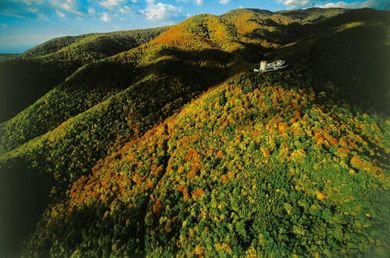
History
The name Medvednica is mentioned for the first time in 1242 in the Golden Bull by Bela IV under the name Medwenicha, by which Zagreb was granted an estate in the mountain. The name Zagreb 's mountain is in use since 19 th century in the age of absolutism when mountains used to be named after towns and places, which at the same time marked the forest in town's property.
Human settlements existed on Medvednica since prehistoric times, which are witnessed by rich paleontology findings from older and younger Stone Age in Veternica and Vidovec (Stone Age and Bronze Age tools, fireplaces, and graves), Marija Bistrica and Kralj's peak.
Antique stone findings in Vrapče, and highway trails that passed by border areas in Kašina are indicators of Roman settlement.
In the middle ages historical happenings around Medvednica are connected to Medvedgrad and Susedgrad, and a castle in Gornja Stubica, as well as to urban core of today's Zagreb : Gradec and Kaptol. Villages at the foot of the hill are for the first time mentioned in 13 th century: 1201 Čučerje; 1209 Donja Stubica, Stubičke Toplice, Marija Bistrica and Bistra; 1217 Vrapče and Granešina; 1242 Mikulići; 1287 Podsused; 1317 Markuševac and Gračani; 1321 Vidovec; 1326 Bidrovec; 1342 Stenjevec.
From baroque and classicism remaining are feudal seats and manors in Gornja Bistra, Jakovlje, Gornja Stubica, Šestine, Vugrovec.
Since ancient times on the area of Medvednica natural resources were used, for example rocks for construction of houses and firewood. Iron was melted since 13 th century which is witnesses by remainings of melting furnaces (Pustodol and Rudnica). There is a mining decree on salt excavation in Slani stream from 14 th century. In those days salt was used as a means of payment. Unknown data is that on Medvednica coal used to be excavated. In 18 th century near Gornja planina a coal mine was opened. In the area of Rudarski vrt (Miners' garden) in 16 th century silver was excavated, and in 18 th century it was excavated in French mines, as well.
The first groundwork for forest management on Medvednica dates in 1877.
On the streams of Medvednica existed many watermills, mills, and sawmills and on gentle slopes of Medvednica hills the inhabitants have always been farming, growing wine and fruits.
From 19 th century Medvednica is used as a recreational area (1859 first gazebo; 1870 pyramid, first mountaineering object; 1875 first excursion to Sljeme; 1934 first ski – jump).
At the beginning of 20 th century, at elevation of 846 m, Brestovac sanatorium was constructed for treating workers with tuberculosis. In 1968, because of the new conditions in health service and new way of treating tuberculosis, the hospital was closed down and soon after that devastated.
Since ancient times people felt gratitude and awe for the mountain. This is witnessed by many sacral objects, such as Roman altar from Bliznec, St. Jakob's chapel, Chapel of Mother of God Queen of Croats, etc.
There are 3 monuments of park's architecture in the Park, and they are located at the foot of the mountain: landscape gardens from 18 th century next to Oršić castle in Gornja Bistra, landscape gardens from 19 th century next to Golubovec castle in Donja Stubica, and a garden from 19 th century next to Junković manor near Stenjevec.
Human settlements existed on Medvednica since prehistoric times, which are witnessed by rich paleontology findings from older and younger Stone Age in Veternica and Vidovec (Stone Age and Bronze Age tools, fireplaces, and graves), Marija Bistrica and Kralj's peak.
Antique stone findings in Vrapče, and highway trails that passed by border areas in Kašina are indicators of Roman settlement.
In the middle ages historical happenings around Medvednica are connected to Medvedgrad and Susedgrad, and a castle in Gornja Stubica, as well as to urban core of today's Zagreb : Gradec and Kaptol. Villages at the foot of the hill are for the first time mentioned in 13 th century: 1201 Čučerje; 1209 Donja Stubica, Stubičke Toplice, Marija Bistrica and Bistra; 1217 Vrapče and Granešina; 1242 Mikulići; 1287 Podsused; 1317 Markuševac and Gračani; 1321 Vidovec; 1326 Bidrovec; 1342 Stenjevec.
From baroque and classicism remaining are feudal seats and manors in Gornja Bistra, Jakovlje, Gornja Stubica, Šestine, Vugrovec.
Since ancient times on the area of Medvednica natural resources were used, for example rocks for construction of houses and firewood. Iron was melted since 13 th century which is witnesses by remainings of melting furnaces (Pustodol and Rudnica). There is a mining decree on salt excavation in Slani stream from 14 th century. In those days salt was used as a means of payment. Unknown data is that on Medvednica coal used to be excavated. In 18 th century near Gornja planina a coal mine was opened. In the area of Rudarski vrt (Miners' garden) in 16 th century silver was excavated, and in 18 th century it was excavated in French mines, as well.
The first groundwork for forest management on Medvednica dates in 1877.
On the streams of Medvednica existed many watermills, mills, and sawmills and on gentle slopes of Medvednica hills the inhabitants have always been farming, growing wine and fruits.
From 19 th century Medvednica is used as a recreational area (1859 first gazebo; 1870 pyramid, first mountaineering object; 1875 first excursion to Sljeme; 1934 first ski – jump).
At the beginning of 20 th century, at elevation of 846 m, Brestovac sanatorium was constructed for treating workers with tuberculosis. In 1968, because of the new conditions in health service and new way of treating tuberculosis, the hospital was closed down and soon after that devastated.
Since ancient times people felt gratitude and awe for the mountain. This is witnessed by many sacral objects, such as Roman altar from Bliznec, St. Jakob's chapel, Chapel of Mother of God Queen of Croats, etc.
There are 3 monuments of park's architecture in the Park, and they are located at the foot of the mountain: landscape gardens from 18 th century next to Oršić castle in Gornja Bistra, landscape gardens from 19 th century next to Golubovec castle in Donja Stubica, and a garden from 19 th century next to Junković manor near Stenjevec.
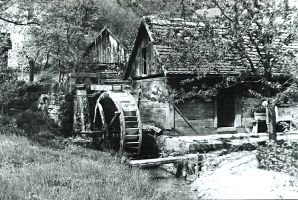
Old mill - watermill in Gračani on Ribnjak stream
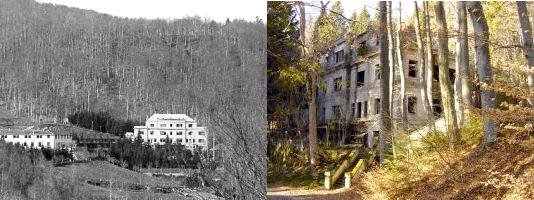
Brestovac once and today
Localities
Bliznec
Bliznec is a very old settlement. At first it belonged to Medvedgrad, and in the middle of 13 century Bela IV gave it to Dominicans (it was then called Blizna). On Bliznec stream used to be a mill colony, where watermill trade was passed on from one generation to another.
Forestry Bliznec
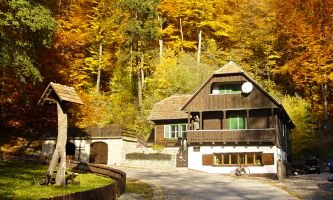
Next to Bliznec stream, as the last house next to Sljeme road where a steep climb towards the top of Medvednica begins is forestry Bliznec, with headquarters of Public Institution “Nature Park Medvednica”. Next to it is the Chapel of Mother of God of the Road, a sacral object which spontaneously arose at the beginning of the road.
Brestovac
Brestovac, former sanatorium for treating tuberculosis, was built by county treasury for workers' insurance in Zagreb in the period from 1907 to 1908 on the land which was a gift from count Miroslav Kulmer. South side exposed to sun, 846 m elevation, which had an ideal position in the middle of spacious forests, made that, at that time our unique sanatorium for treating tuberculosis, famous. In the beginning it was envisaged as a small sanatorium, but soon it became too small for a great number of patients, so it was expanded two times. The very sanatorium had the most modern equipment. For a long time its manager was Dr. Milivoj Dežman known for his great love towards Ljerka Šram, one of his patients.
Cable-way (ZET)

Sljeme cable-way can be reached from the center of Zagreb by tram no. 15 at Mihaljevac. On the last tram stop, from the terminal, one passes a tunnel 200 m long underneath Rebar spur. That tunnel was built in the middle of last century, and was planned as a connection of Zagreb and Stubičke toplice through Medvednica. From the tunnel, in a 10 minute walk, one reaches the bottom station of Sljeme cable-way. The cable-way runs every day, weekdays from 8 A.M. to 8:30 P.M. and on weekend from 8 A.M. to 9 P.M. , with departure every hour on the hour. The bottom station is on elevation 330 m, and the upper 1000 m.
Medvedgrad
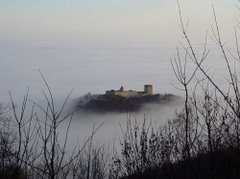
In 13 century, when Medvedgrad was built, the most significant incident in Croatia was Tatars invasion, which devastated this area and left a deep mark in the memory of people of those days.
Medvedgrad, fortified feudal town, belonged to a system of fortresses which were supposed to secure and prevent yet another catastrophic ravage of Tatars troopers. It was built on a hill Mali Plazur. Medvedgrad was built in a very short period of time, and it marks itself with a high quality of construction. High artistic level and quality of construction are witnesses of a wealthy orderer.
Expert literature has a lot of dilemmas regarding building of Medvedgrad, but it is certain that the burg was completed in 1254. The initiative for construction gave pope Inocent IV, and in those times Kaptol's Bishop was Filip, king's confident and great constructor.
Medvedgrad, fortified feudal town, belonged to a system of fortresses which were supposed to secure and prevent yet another catastrophic ravage of Tatars troopers. It was built on a hill Mali Plazur. Medvedgrad was built in a very short period of time, and it marks itself with a high quality of construction. High artistic level and quality of construction are witnesses of a wealthy orderer.
Expert literature has a lot of dilemmas regarding building of Medvedgrad, but it is certain that the burg was completed in 1254. The initiative for construction gave pope Inocent IV, and in those times Kaptol's Bishop was Filip, king's confident and great constructor.
Location
Sljeme
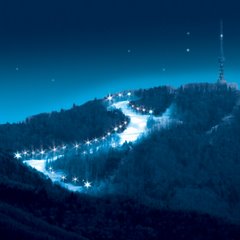
Wednesday, July 4, 2007
Subscribe to:
Posts (Atom)

